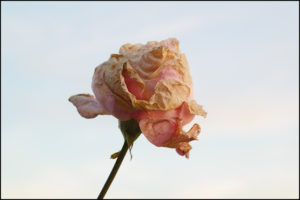
Every day, every moment, we inch closer to death. Death is natural and inevitable – a fact to be faced rather than turned away from. However much we try to avoid dying, it is ultimately unavoidable. There is a poignancy to each moment, as well as a welcoming possibility. We say goodbye, as we say hello.
The Buddha was a realist and a very practical teacher. He urged his students to face all aspects of existence with clarity of mind, courage and equanimity. Suffering is only postponed, or made worse, by trying to avoid difficult experiences or by pretending that beings do not change, grow old and die. To feel loss and to grieve is natural and part of the weft of life, but to be unable to say goodbye and to let go, goes against the natural order of things – the natural order of impermanence, change, causality and interdependence.
What happens after death is unknown. The Buddha tended to focus on understanding, facing and dealing with what we do know, and advised against too much speculation – let alone worry – about what we don’t know – including, whether there is life after death. Learning how to live is what is important – the art of living is also the art of dying: to be mindful of each moment until there are no more moments.
Joseph Goldstein, a well-known meditation teacher, suggests that mindful meditation presents us with a method for living and for dying – enabling us to face both experiences “from a place of peace, of openness, of acceptance [… rather than reacting] with fear or anxiety, or even with panic or terror.” The practice of mindful meditation is a way of training the mind to calmly attend to each moment of consciousness, to be present and to accept with courage what IS – and thus be better able to think and act with clarity, balance and compassion.
Life and death, living and dying, are part and parcel of one continuous process – the process of existing. Life and death are one – we can’t live without dying. Even as the flower blooms, it is beginning to fade and to die. To fear death is to fear life. To be mindful and accepting of life, is to be mindful and accepting of death.
In his book, What the Buddha Taught, Walpola Rahula quotes the Buddha: “Every moment, you are born, decay and die” – but this process continues moment by moment. The question, therefore, arises: if this process continues from moment to moment, does it not also continue after the last breath? From a scientific point of view, we can say that the atoms that constitute our body are, as the body decays, released back into the vast atomic storehouse of the universe – to be formed and reformed into other entities. This may be as far as we can speculate based on empirical evidence.
Dogen, in the Genjo Koan, writes: “Firewood, after becoming ash, does not become firewood again. Similarly, human beings, after death do not live again.” [Quoted by Brad Warner on the Hardcore Zen website.] In some of his other writings Dogen does refer to rebirth – after all, it was a commonly accepted belief in sixteenth century Japan – but he never explicitly argues that the individual self is reborn – indeed he argues against this notion.
Although the process of dying may, and often does, involve suffering – both for the dying person and for those who continue to live – the suffering can be alleviated or minimised by being mindful. Learning to be present, and to let go, enables us to deal calmly and creatively with living and dying. We can be open, caring and helpful, while accepting that this is how things are (dharma).
